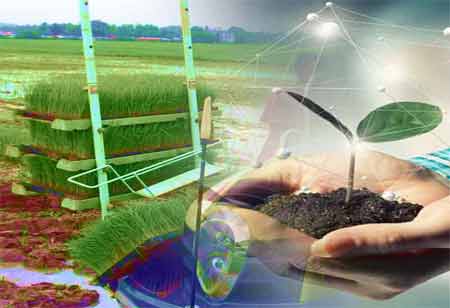Thank you for Subscribing to Agri Business Review Weekly Brief
A Comprehensive Guide to Irrigation Systems
Irrigation is the artificial process of providing water to crops, pastures, and plants, enabling them to grow, meet water requirements, and develop nutrients, leading to high yields. Irrigation types include

By
Agri Business Review | Tuesday, February 27, 2024
Stay ahead of the industry with exclusive feature stories on the top companies, expert insights and the latest news delivered straight to your inbox. Subscribe today.
Irrigation is the artificial process of providing water to crops, pastures, and plants, enabling them to grow, meet water requirements, and develop nutrients, leading to high yields.
Fremont, CA: Irrigation is the artificial process of providing water to crops, pastures, and plants, enabling them to grow, meet water requirements, and develop nutrients, leading to high yields. Irrigation types include:
Surface Irrigation
A surface irrigation system uses gravity and land contour to spread water over a field. As water flows downhill from higher elevations, it gets to crops. But it takes a lot of work. You can only do it if you have enough water and the ground is naturally sloped. Water gets carried down a hill by channels over a paddock in the furrow system.
Drip Irrigation
A drip irrigation system reduces water runoff and evaporation by delivering small water droplets to the roots. The pressure requirement is 10-20 psi, so it's profitable, suitable for places with limited water supplies or high water costs, and perfect for all soil types.
Sprinkler Irrigation
A sprinkler irrigation system simulates natural rainfall by spraying water into the air through high-pressure sprinklers or guns. Their wide discharge capacity lets them irrigate most soil types since they're sprayed from a central location.
Sub-Surface Irrigation
In this type of irrigation, water is delivered directly to the ground, reducing airborne runoff and drift. That raises the water table, which makes it easier for crops to drink. Through underground pipes, tubes, or drip tape, it reduces evaporation water loss and increases crop yields by reducing weeds and diseases.
Various Methods Of Irrigation:
Manual Irrigation
Spreading water across land by hand and using watering cans is an ancient method still prevalent in developing nations. This method costs a lot and is inefficient because water is unevenly distributed, and much of it gets wasted.
Sprinkler System
In sprinkler irrigation, water is sprayed from pipes under pressure through nozzles attached to a pump, aiming for an even distribution of water over crops. It's best when there's a lot of water.
Drip Or Trickle System
A drip irrigation system sends water directly to the roots using a hosepipe. It's great for places with water shortages, and you can use recycled or non-potable water. By targeting water to the crop, drip irrigation reduces weed growth and soil erosion.





